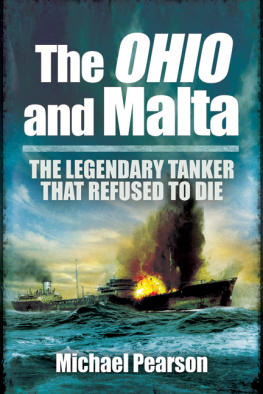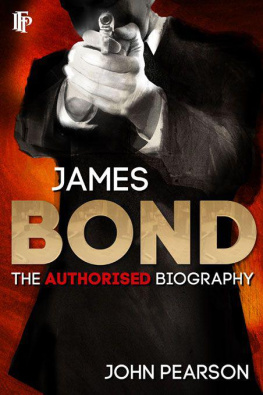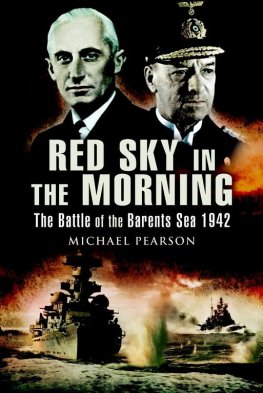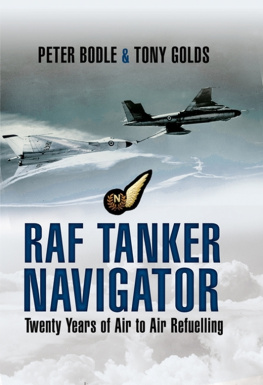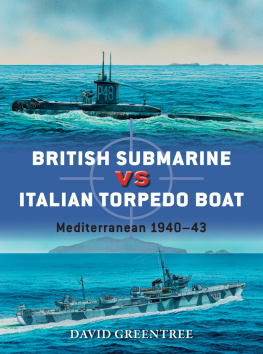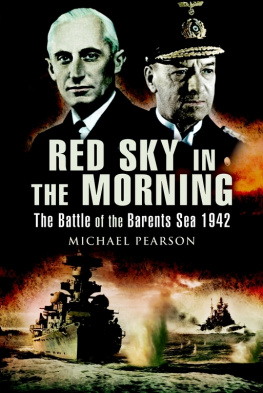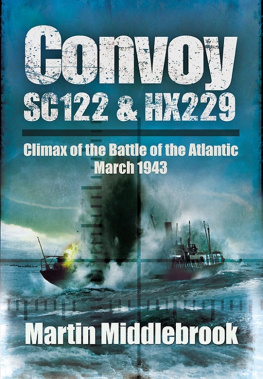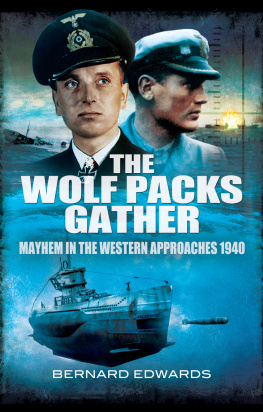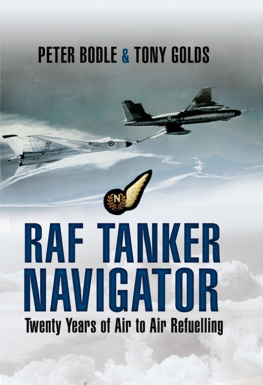

First published in Great Britain 2004 by
LEO COOPER
an imprint of Pen & Sword Books Ltd
47 Church Street,
Barnsley,
South Yorkshire, S70 2AS
Copyright Michael Pearson, 2004
ISBN 1 84415 031 5
eISBN 9781783037117
A catalogue record for this book is available from the British Library
Typeset in Plantin by
Phoenix Typesetting, Auldgirth, Dumfriesshire
Printed in England by
CPI UK.
Acknowledgements
I would like to take this opportunity to express my appreciation to the following persons and organisations for their invaluable assistance in the preparation of this book:
Stato Maggiore della Aeronautica, Rome.
Bundesarchiv, Germany, (researcher Dr Ekkehart Guth).
Mrs Patricia Davis.
Lieutenant Keith Frost, Ledbury.
John C. Harper, Historian, Chevron Texaco Archives, San Ramon, California, USA.
Dave Helyar, Merchant Navy Association.
Imperial War Museum Photographic Archive, London.
Stato Maggiore della Marina, Rome.
Ray Morton, Ohio.
Danny Omara, Brisbane Star.
Norman Warden Owen, Deucalion.
Phillip Perry, Empire Hope .
The Public Record Office, London.
Allan Shaw, Ohio .
Shell Information Technology International Ltd., London, Senior Information Consultant Mrs Veronica Davies.
Vic Simmons, Rodney .
Mike Taylor, for once again wading through drafts and proofs and weeding out mistakes!
Mr & Mrs Nigel Welby.
The World Ship Society
To all, my sincere and grateful thanks.
Michael Pearson
Maps and Diagrams
In text
Turbine tanker Ohio , general arrangement plan.
The Eagle Oil compressed-air salvage system.
Convoy dispositions 2 August.
Cruising dispositions 11 August.
Two-column formation intended but never actually achieved for passage through The Narrows.
Trials manoeuvring diagram.
Auxiliary steering gear test.
At back of book
Malta: strategic crossroads of the Mediterranean.
The Maltese archipelago.
The voyage of the Ohio .
Introduction
The first inhabitants of the Maltese archipelago are believed to have been Neolithic settlers who crossed over from nearby Sicily in around 5000 BC. Civilisation flourished in the islands, as elsewhere in the Mediterranean Basin and the Middle East, and is evidenced by the Ggantija Temples, which date back to 3600 3200 BC and are believed to be among the oldest man-made structures in the world. In 60 AD Saint Paul of Tarsus was shipwrecked on Malta while being taken as a prisoner to Rome. During his stay he converted many in the islands to Christianity and appointed the first bishop of Malta, St Publius.
The strategic significance of the islands was appreciated from the earliest times, and in their turbulent history they have been occupied by the Phoenicians, Carthaginians, Romans, Arabs, Normans, Spanish, French, British, and perhaps most famously, by the Knights Hospitalers, the Order of St John of Jerusalem, given the islands in perpetuity by Emperor Charles V of Spain in 1530.
In July 1551, Ottoman Turks attacked Gozo, the northernmost island of the group, taking the entire population of 5,000 into slavery in Libya. In July 1565, the Turks returned to lay siege to Malta with a fleet of 181 ships and an army of 30,000 men, the defenders numbering some 600/700 Knights and between 8,000 and 9,000 men. A series of bloody battles ensued, until the Turks were forced to withdraw two months later. In 1566 work commenced on a new fortified capital city, present day Valetta, named for la Valette, commander of the Knights during the Great Siege.
Britains long association with the islands began in 1798 when Napoleon Bonaparte, en route to Egypt with an army of 54,000 troops, stopped off at Malta. Appreciating the strategic significance of the islands, and the superb Grand Harbour, Bonaparte gave the Knights Hospitalers three days to leave and installed a French Governor with a garrison of 4,000 men. French plans for an empire that stretched as far as India were effectively wrecked by Nelsons destruction of the French fleet at Aboukir Bay, and in 1800 the Maltese rose up in revolt against Bonapartes garrison. Nelson appointed Captain Alexander Ball to take charge of the blockade, and later arranged for reinforcement of the Maltese insurgents by Portuguese marines and 1,500 British troops. With the French garrison finally starved into surrender, the Maltese, who preferred to remain under British protection, rejected proposals for the return of the Knights Hospitalers, and Malta was confirmed as a British Crown Colony by the Treaty of Paris in 1814.
Of all the tests of stamina and determination to which the population of Malta has been subjected during its long history, perhaps the most stern, perhaps Maltas own finest hour, began in June 1940 and continued for almost three years, until May 1943. During the course of this second Great Siege, the civilian population suffered considerably, as Malta was subjected to naval blockade and became one of the most bombed areas in the world, as illustrated by the fact that from 1 January 1942 to 24 July 1942 there existed just one twenty-four-hour period when no bombs fell.
Strenuous efforts were made to keep the islands supplied, but their isolated position surrounded by Axis strongholds made this an exceptionally difficult undertaking. Of the eighty-six supply ships dispatched singly or in convoy to Malta between August 1940 and August 1942, thirty-one were sunk and many others damaged and/or driven back. In appreciation of the islands sacrifice, and in an effort to maintain morale, in April 1942 George VI awarded Malta the George Cross, and insisted on visiting the island as soon as he was able, which he did as an extension to a tour of Allied forces in North Africa, arriving in Grand Harbour aboard the cruiser Aurora on 20 June 1943. The population of Malta appreciated the gesture and, considering that they had only been told in the early morning, I dont know where they found the flags and how they had time to decorate the streets but it was done .
The arrival of ships of the Pedestal convoy on 15 August 1942 greatly eased the plight of Malta and enabled the islands to hold on, but it did not end the ordeal. German Commander in Chief South, Field Marshal Albert Kesselring, unleashed his bombers again in October in yet another series of massive bombing raids in an effort to bring the islands to their knees. The attempt failed, and following the Eighth Armys victory at El Alamein during October/November 1942, the Axis loss of Libyan airfields at last began to relieve the pressure. On 20 November 1942 the four merchantmen of the Stonehenge convoy delivered some 35,000 tons of supplies to Malta and effectively raised the siege; twelve days supply of food remained in Malta at the time.
Malta proved to be a festering thorn in the side of the Axis from the beginning of the Mediterranean and North African campaigns to the end. At various times Grand Admiral Raeder, Field Marshal Kesselring and Field Marshal Rommel all advocated invading the islands and solving the problem once and for all. Perhaps Maltas diminutive proportions went some way towards saving her, since when push came to shove, Hitler, Mussolini, and ultimately Rommel himself, all opted for more grandiose schemes at the expense of the capture of these tiny islands. This, it transpired, would prove to be a strategic miscalculation of some significance.
Next page
